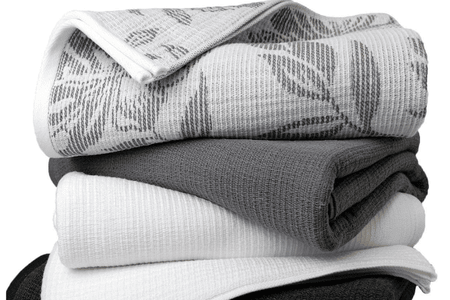
France and Sweden have submitted a proposal to Echa to ban or restrict over 1,000 skin sensitisers in textiles, leather, furs and skins sold to consumers
YarnsandFibers News Bureau 2019-05-07 19:00:00 – United KingdomFrance, Sweden propose ban on over 1,000 allergens in textiles.
The joint initiative includes all substances classified as skin sensitisers under the CLP Regulation and 25 substances of the family of disperse dyes with sensitising properties.
Ahead of the proposal, the French Agency for Food, Environment and Occupational Health and Safety (Anses) conducted a study to identify substances present in certain articles. And the Swedish Chemicals Agency (Kemi) carried out an analysis of risk management options under REACH on skin sensitisers in textiles.
The two agencies propose to limit the concentration of sensitising substances under REACH to the following thresholds:
1mg/kg for chromium VI compounds (textiles, leather, furs and skins);
130mg/kg (textiles) and 110mg/kg (leather, furs and skins) for nickel and its compounds;
70mg/kg (textiles) and 60mg/kg (leather, furs and skins) for cobalt and its compounds;
75mg/kg for formaldehyde (textiles, leather, furs and skins);
250mg/kg (textiles) and 210mg/kg (leather, furs and skins) for 1,4 paraphenylene diamine; and
130mg/kg (textiles) and 110mg/kg (leather, furs and skins) for other substances classified as skin sensitisers.
Anses also undertook an analysis of possible safe substitutes for these substances. "Chemical alternatives exist, in particular for disperse dyes for which substitution is feasible and already underway in Europe," it said.
Anses also undertook an analysis of possible safe substitutes for these substances. 'Chemical alternatives exist, in particular for disperse dyes for which substitution is feasible and already underway in Europe,' it said
For other families of substances such as diisocyanates, implementing best production practices should reduce or eliminate the presence of these chemicals in finished articles, the agency added.
Anses and Kemi estimate that four to five million EU citizens have allergies to chemicals that are present in textiles and leather. It is thought that between 45,000 and 180,000 people in the Union develop an allergy to these chemicals every year, they added.
"These days it is difficult to avoid exposure to allergenic substances that may be present in textiles and leather. Once you have developed a skin allergy, it is a life-long problem," Kemi risk manager Helena Dorfh said.
Echa is expected to start a public consultation on the restriction proposal in June. It will be open for six months, Anses said.
After that, Echa's Risk Assessment (Rac) and Socio-economic Analysis (Seac) Committees will formulate, on the basis of all the data, an opinion which will be sent to the European Commission to decide on the adoption of this restriction.
If adopted, it will be included in REACH Annex XVII and will be mandatory for textiles, hides, furs and skins placed on the market in Europe.
Industry welcome
Textiles and apparel industry association Euratex said that, while it is too early to comment on the impact of the preliminary list of substances and scope, it welcomes the effort to increase consumer protection. Businesses, it added, are already undertaking voluntary initiatives to ensure product safety in this area.
Like the adopted restrictions on carcinogenic, mutagenic and reprotoxic (CMR) substances in textiles, this new proposal "may truly contribute to the safety of textile articles if properly enforced", Euratex sustainability officer Dunja DrmaÄ said.
The challenge, she added, is in controlling these substances in the large quantities of imported products that may not comply with EU regulations.
European consumer organisation Beuc said the proposal is "great news for millions of consumers" across the Union.
Senior policy officer Pelle Moos said EU action "so far has been scandalously slow. Now we expect that the EU Commission and the EU chemicals agency ensure that the proposal is finalised quickly, without compromising the current ambition."
Courtesy: Chemical Watch
Market Intelligence
Ask for free sample Report

experience
Customer Base
dedicated team
Countries Served Worldwide









